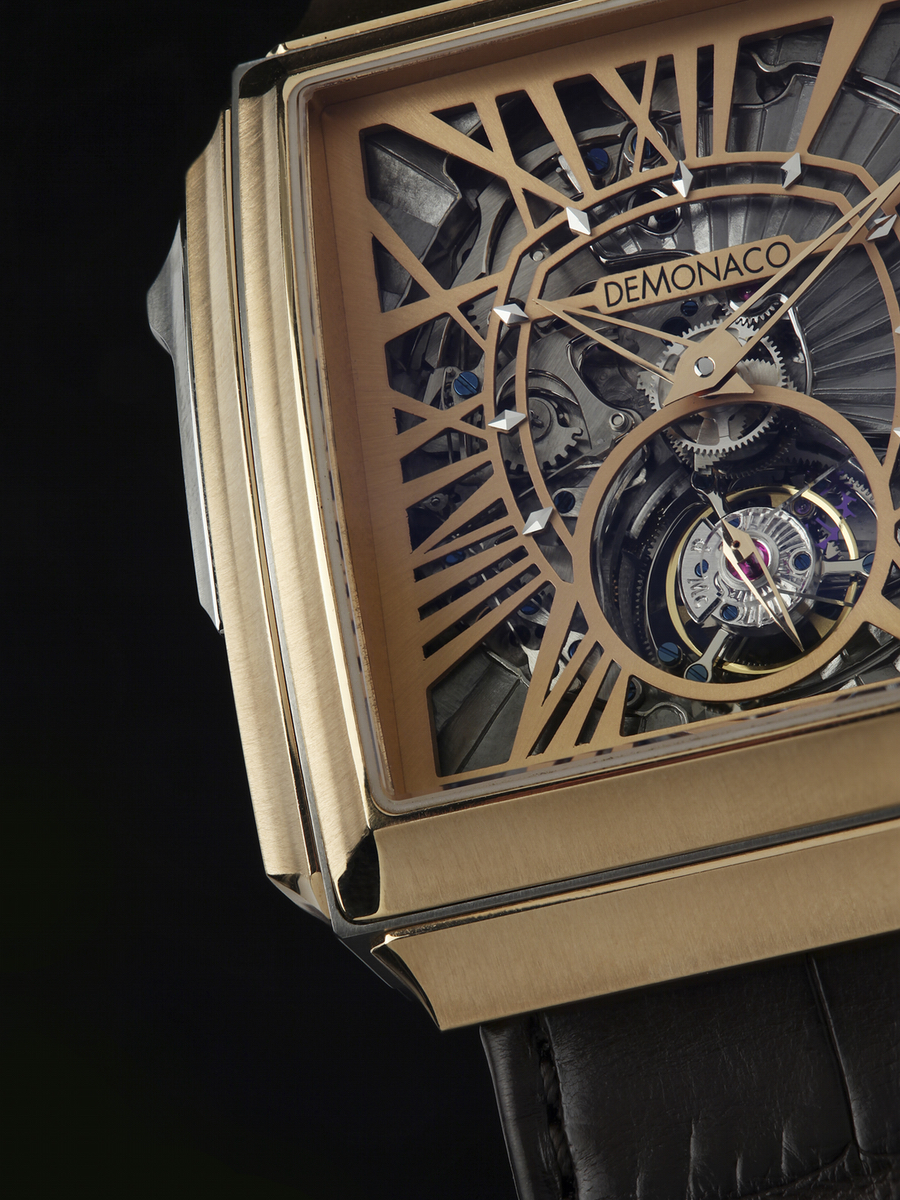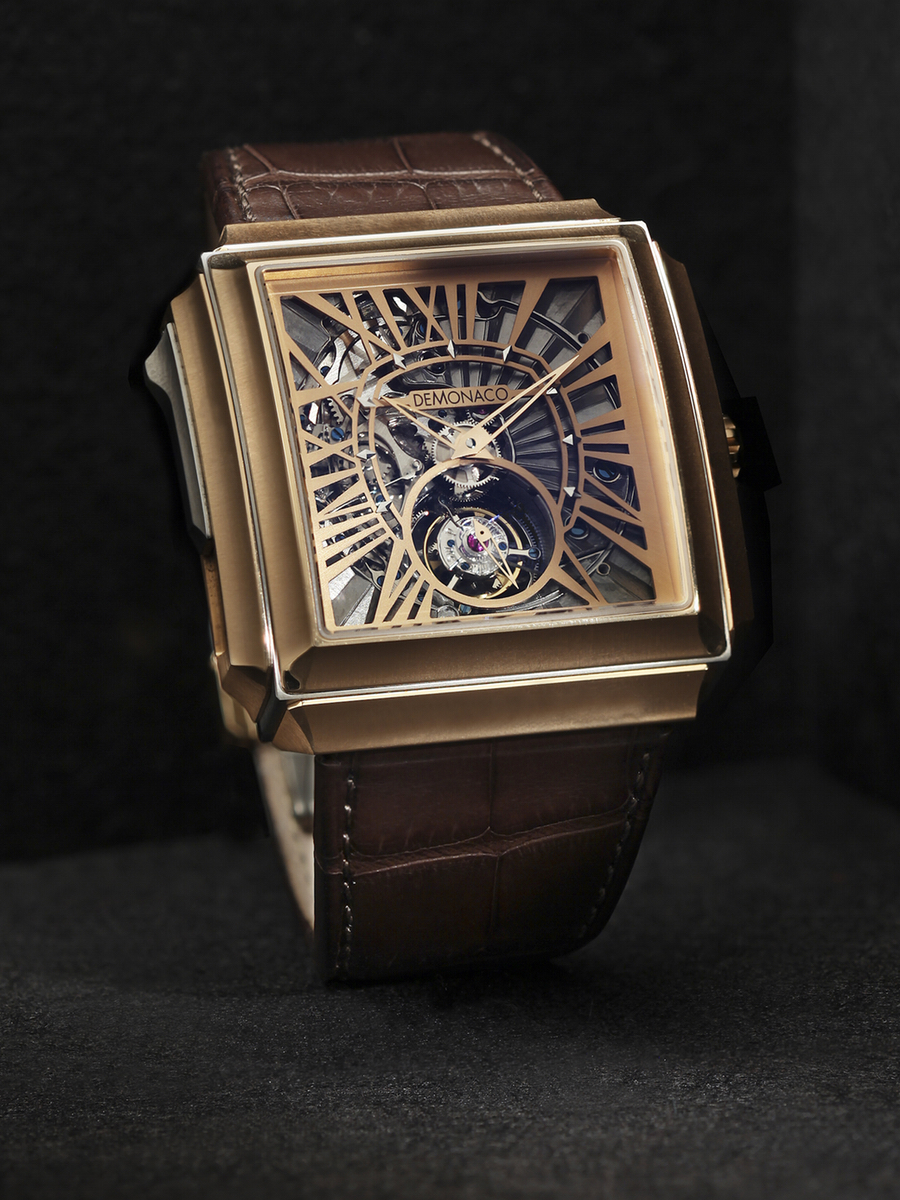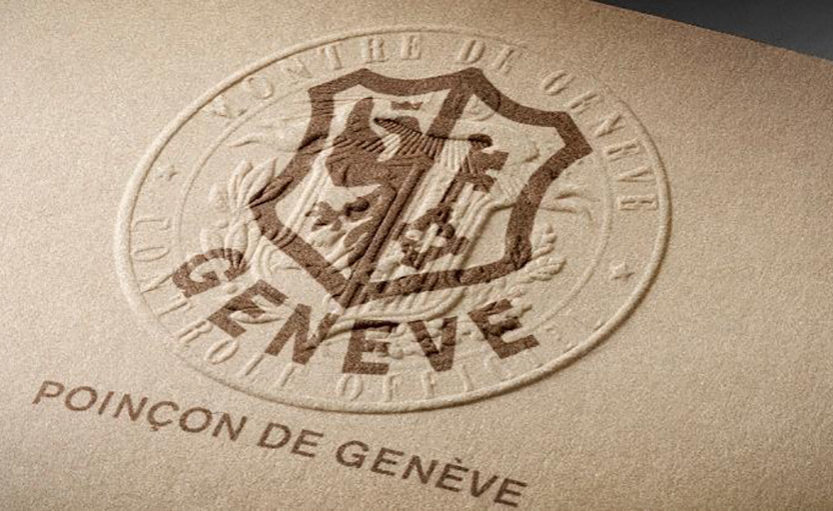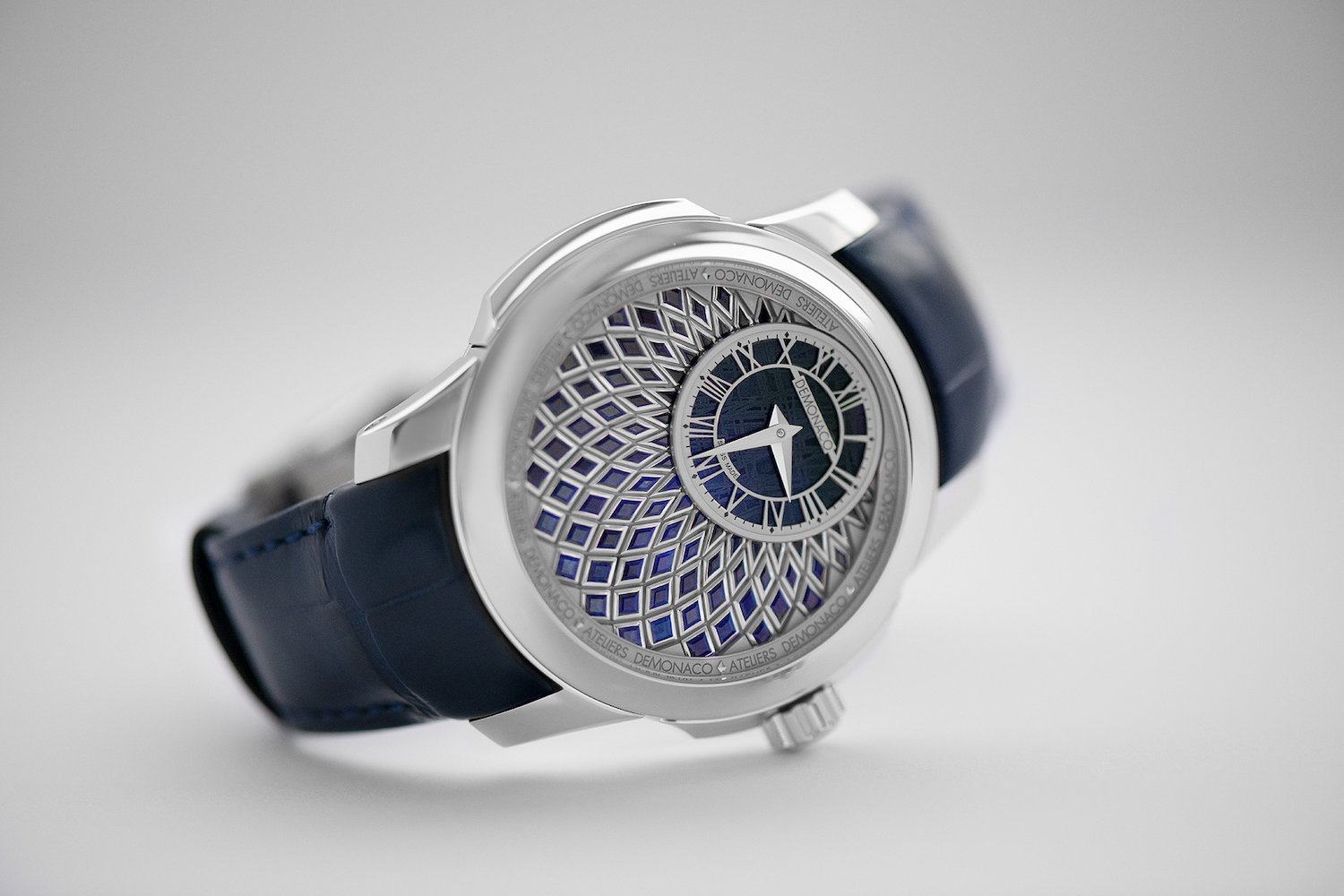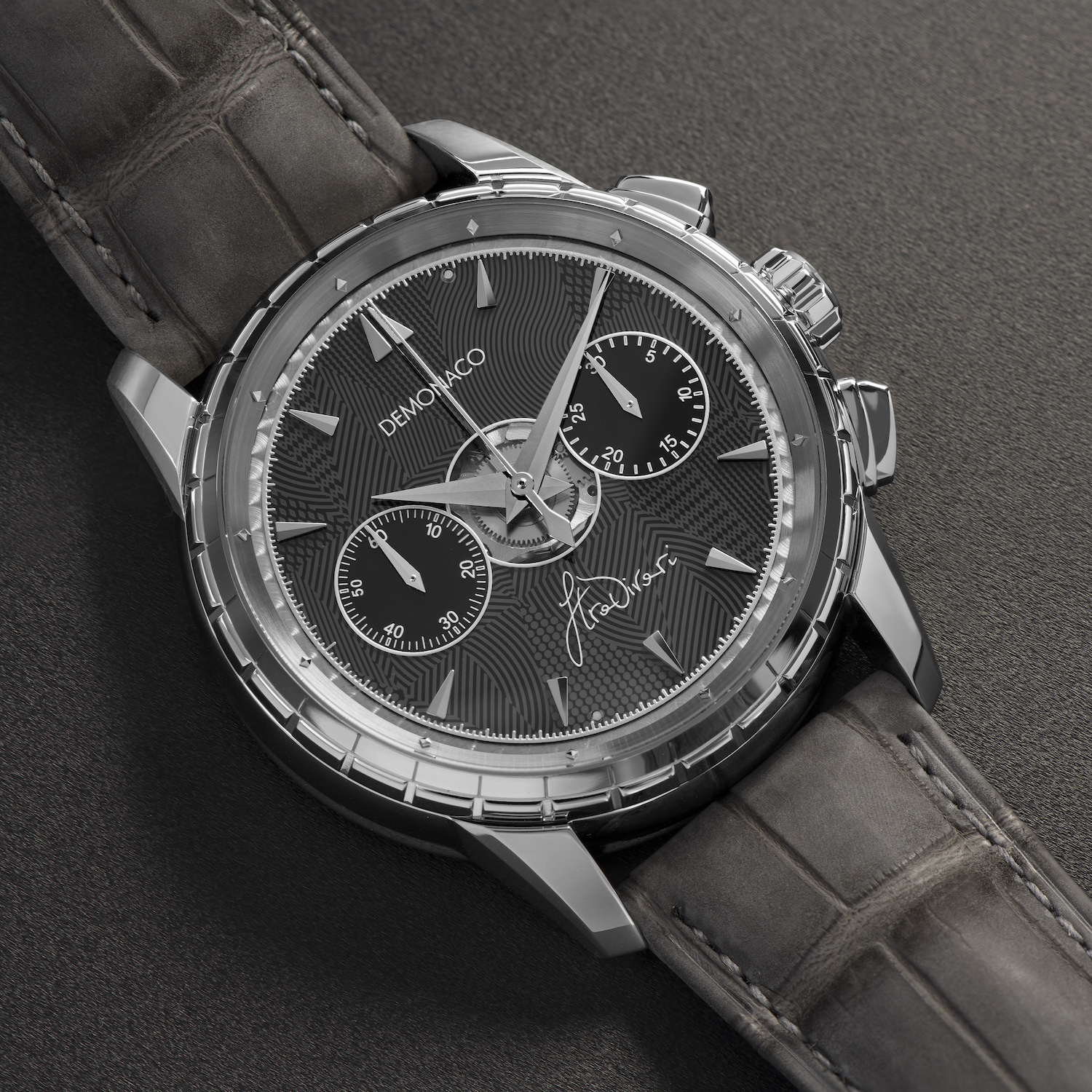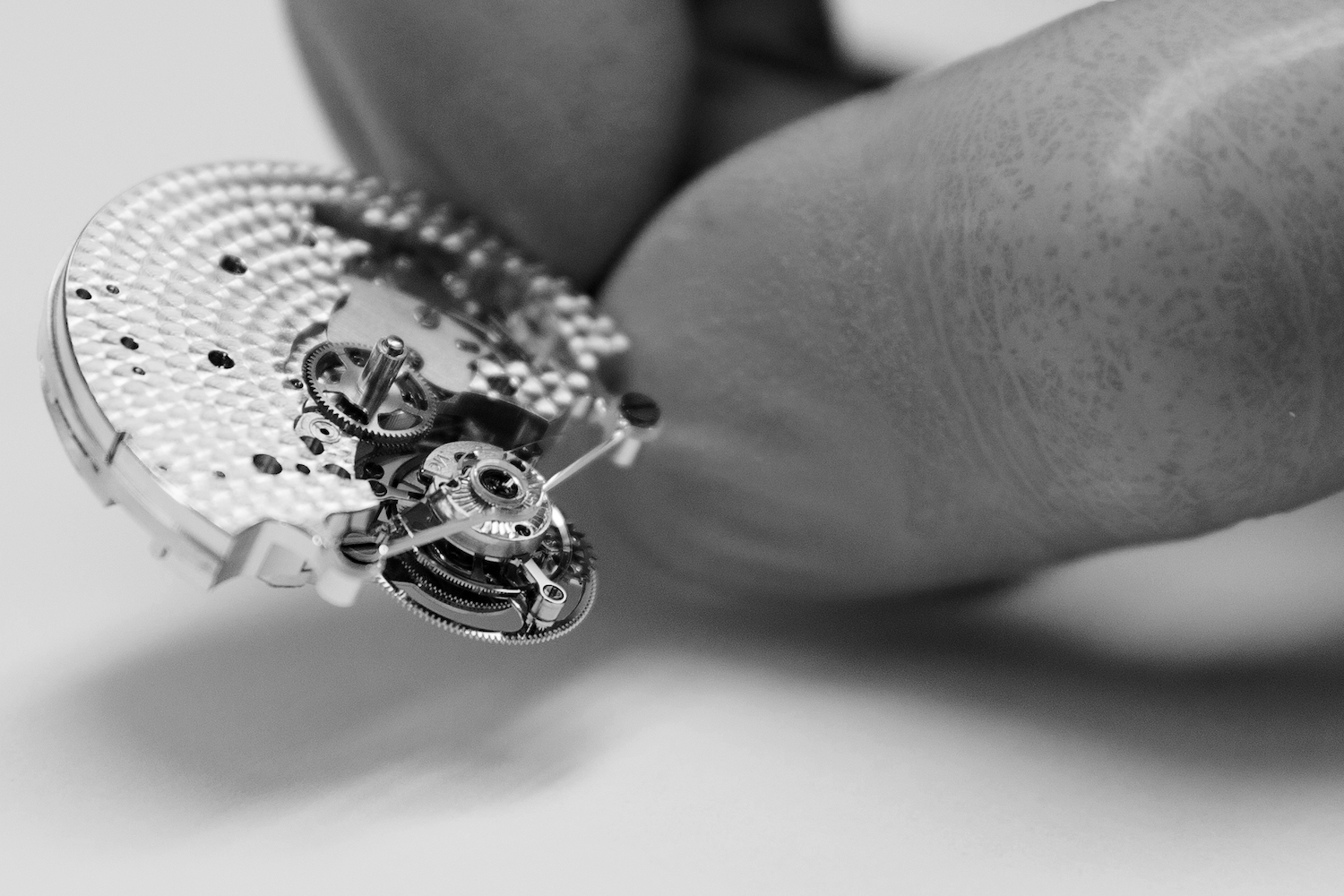Pim Koeslag, CEO of Ateliers deMonaco, Proud Bearer of the Geneva Seal
On what it takes to create a haute-horlogerie brand from scratch.
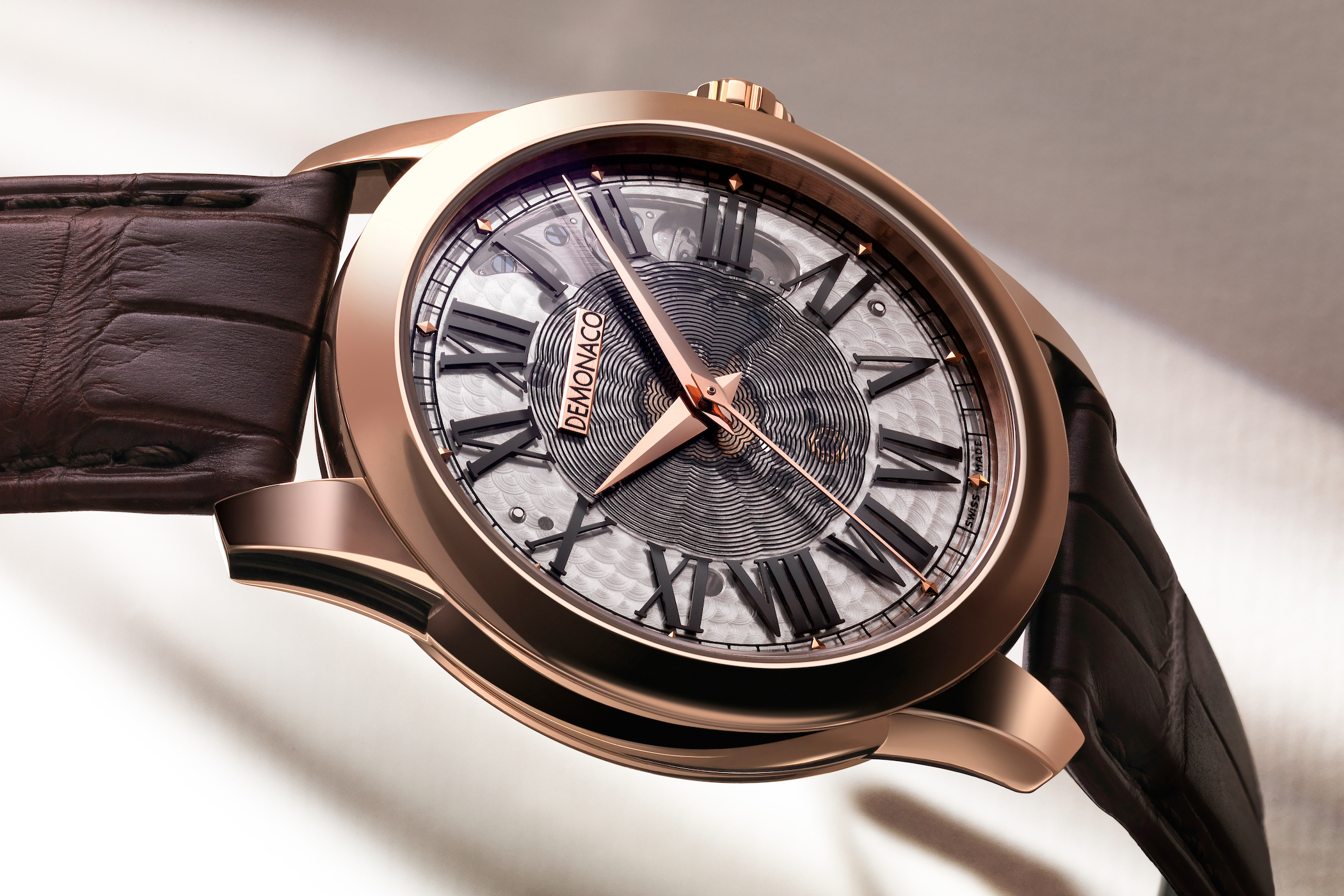
From the Prince of Qatar to the Prince of Monaco, and from one of the biggest watch collectors in the world to a descendant from the famous violin builder Stradivarius, watch lovers are finding their way to Ateliers deMonaco. Founder and master-watchmaker Pim Koeslag, also Frederique Constant’s Technical Director, even managed to get his brand the much-coveted Geneva Seal, a major feat for a watch brand of barely 10 years old. We spoke to Pim Koeslag at the introduction of his brand at Reijersen Juweliers in Oudewater, The Netherlands, one of the few points of sale for Ateliers deMonaco.
Melinda Braaksma, for MONOCHROME – Technique and design are the two pillars that Ateliers deMonaco is founded on. How does one keep innovating, when so much has already been invented?
Pim Koeslag – CEO of Ateliers deMonaco – We are not looking for another double or triple tourbillon; innovations have to make sense. We seek to simplify in order to improve the accuracy of a watch or to enhance its visual appearance. That’s why I feel more at ease among the independent watch brands than among the well-known, traditional names. Last week, I sat at a table with Kari Voutilainen, Romain Gauthier and F.P. Journe at the Only Watch presentation in Monaco. These are artisanal manufacturers who come with beautiful new and innovative designs and perfect finishes. I do have a lot of respect for the likes of Audemars Piguet, especially in terms of design, but more often than not their innovations are brought to them by independent watchmakers. The indies do it themselves!
Do you come from a family of watchmakers yourself?
Not at all, my mother works in healthcare and my father is a finance professional. Yet, I discovered that one of my ancestors was the famous Dutch clockmaker, Gosselik Rumpel, whose work is exhibited in various museums today. I found his name in an old book on the history of clockmaking. As a student I was always in the library, looking for know-how. After I did some research, it was clear that I am related to Rumpel. He moved to the House of Koeslag in the early 19th century and adopted the name of the estate. It was surprising to find my own name in a document from so long ago.
How did you end up in the watch business, then?
I wanted to work with my hands, but my parents didn’t allow me to go to Amsterdam before I reached maturity. So I started at the School of Creative Art in Almelo, my hometown, in 1998. After I turned 18, I enrolled at the Watchmaking School of Amsterdam (Zadkine Vakschool). In the first year, we were trained in goldsmithing, hand-engraving, silversmithing and running a jewellery store. And although I first thought I would become a goldsmith, within a few weeks it was clear that I was more interested in watch movements. One of my main talents is visualizing and then creating the piece I see in my mind. I can take a minute repeater of 400 parts apart in my head and put it back together again. This comes in really handy when you are designing prototypes.
Where did you go for your traineeships?
I was lucky enough to be trained at Grönefeld, the horological brothers from Oldenzaal, in The Netherlands. Then I went to Patek Philippe for a traineeship. I got this opportunity because I had won the prize for the best watchmaker in the school. But when I was still at school, in 2001, we made a students’ trip to Switzerland, where we visited Patek Philippe, Vacheron Constantin and Rolex. We also met Peter and Aletta Stas at Frederique Constant. That’s when it all came together. Peter asked our group if anyone wanted to help him to develop his own movement. He had the dream but not the knowledge and skills. I was the only one who said yes. So I worked with him as a freelancer. Later, when I told my contact at Patek Philippe, where I had been offered a job too, that I was going to work for Frederique Constant, he looked at me and said: Frederique Constant? Who is that? – Now, they know.
Above, the Tourbillon Répétition Minute Carrée d’Or (tourbillon minute repeater). All the watches names are in French as a wink to Monaco.
Your career flourished after that.
Yes, it has been going uphill from then on. I was 21 when I came to Frederique Constant, twenty years ago, and today the brand has 30 in-house calibres. I loved being part of that process, but I kept on dreaming of developing my own Minute Repeater. When Peter finally gave his consent I was so glad! I finished the Tourbillon Minute Repeater in 2008, and it was beautiful. Peter held it in his hands, he listened and said “Well done, Pim, this sounds wonderful, but how am I going to sell it at Frederique Constant? We have a top price level of about EUR 9,000 and this has to cost around EUR 100,000!” A few months later he came back to me and asked me if I wanted to participate in a new high-end watch brand, that is when Ateliers deMonaco was born.
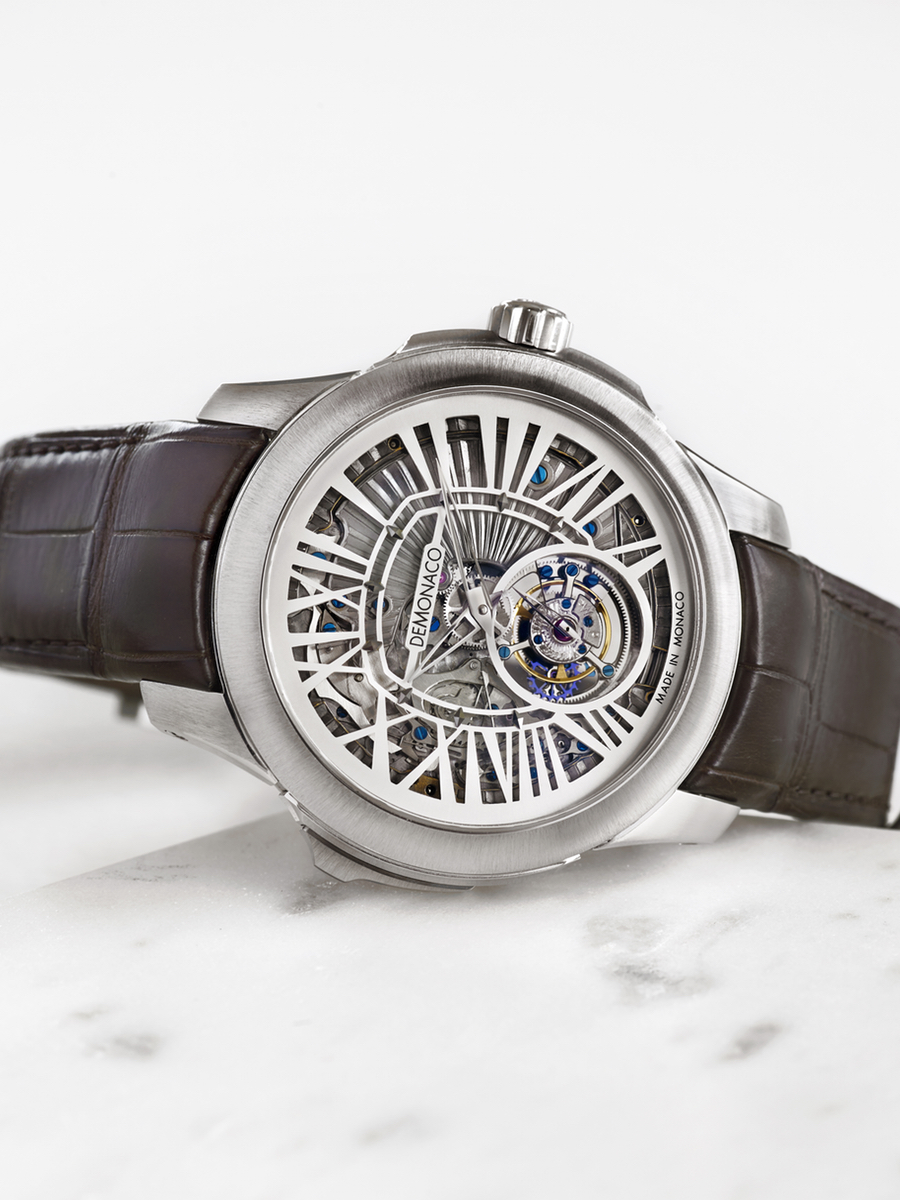
Can you describe your major accomplishments with Ateliers deMonaco?
Well, we have developed six in-house calibres and have four patents, for a start. I’m proud of our Quantième Perpetual Calendar with EaZy-adjust system: you need only one crown to set time, date, day, week, month and year and leap year. Then, there is our Extreme Precision 1-minute tourbillon, which is extremely accurate with a deviation of 0 to +2 seconds per day. The third patent is our Flyback chronograph movement, which has a direct return to zero mechanism that is operated with the pusher at 4 o’clock, and of course, our Freebeat regulation system, which is present in our Poinçon de Genève collection.
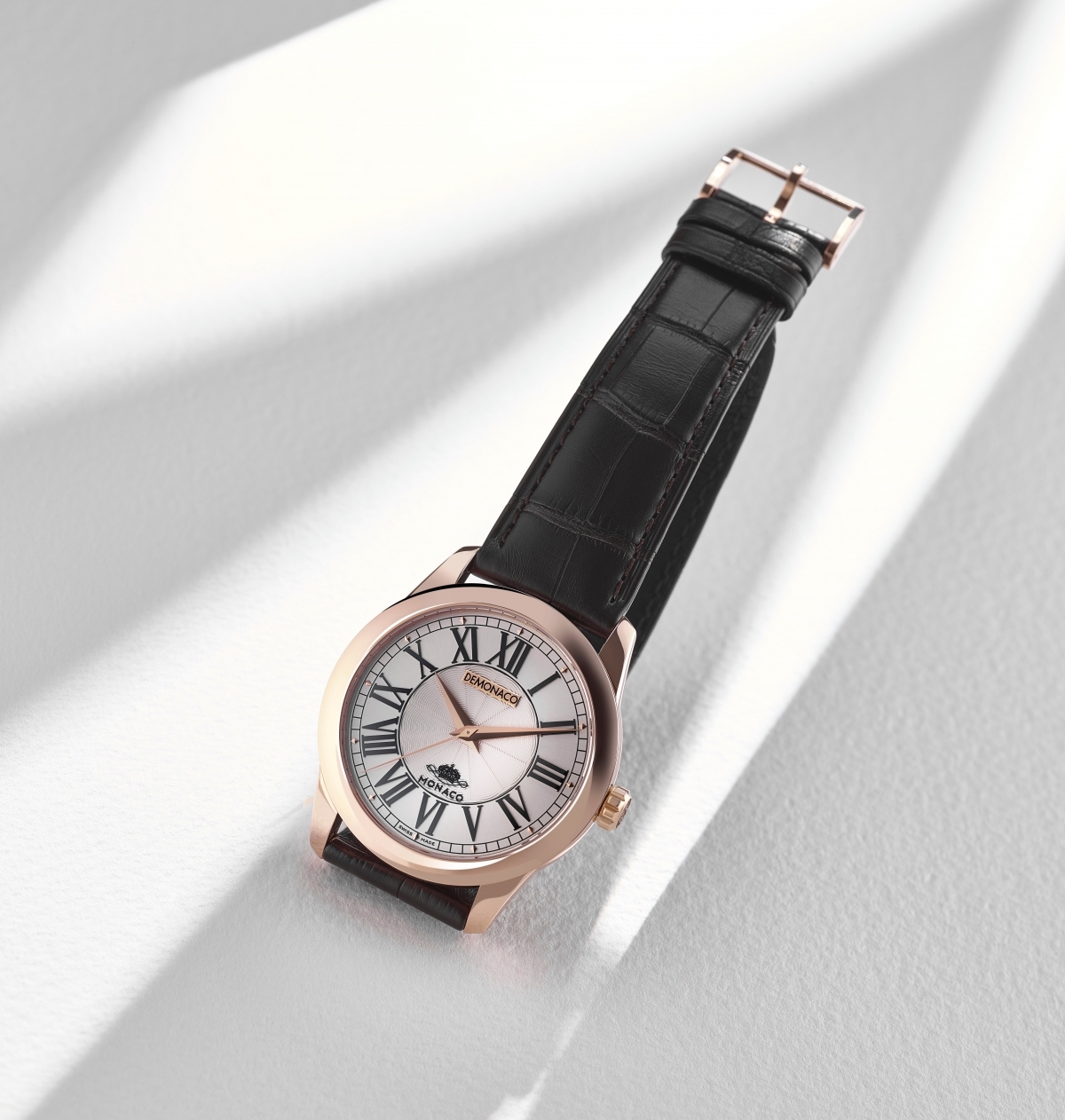
Can you explain how the Freebeat mechanism works?
Traditionally, there were two systems to adjust a movement. In the first you have two pins on each side of the hairspring. The hairspring is bouncing in between them, as it were. By moving this part, you are able to finetune the watch, by making the length of the hairspring ‘longer’ or ‘shorter’. The main problem with this system is that the bouncing hairspring creates friction, which increases the chance of error, especially in the vertical positions, when gravity is pulling the hairspring down. It touches the parts all the time, more so than in the other positions. My main goal was to eliminate this part.
The second system is like the Gyromax, or the Rolex balance wheel with the small screws inside or on top. With those screws, you can change the moment of inertia. That means that the weight of the balance wheel is shifting towards the center of the balance wheel and by that it is going to turn faster, or towards the outside of the wheel and it slows down. It’s like when you’re in an office chair and you give it a swing, and you start to turn rounds. Then, when you pull in your legs towards your body you start to turn faster, and when you put them back out again, you slow down. It’s the same principle. It’s a nice system, the hairspring is bouncing freely. But the negative effect of it is that you have to put screws on top of the balance wheel or on its side, which creates small air friction. It’s moving around but it’s not aerodynamic. This makes it less accurate.
But you found a solution…
Well, I started thinking on how to take away those pins around the hairspring and eliminate that problem and at the same time have a fixed balance wheel to eliminate the problem of the screws. We managed to design a system in which the hairspring is fixed twice. First, inside the balance wheel bridge, as a permanent fixture to keep it in place, and a little bit further on at a second point, where we fix it tightly between one pin and the bridge. Thus, we created a variable fixation, because you can open the second fixation with a small screw on top, and you can move this part with a crémaillère – a kind of mini-toothbrush, a block with teeth on the side. Once you move the second fixation, you can fix it again and create a new fixation point. So you can change the length of the hairspring without cutting it. We called this system the Freebeat regulation system.
And this system operates in the model that is also granted the Poinçon de Genève or Geneva Seal predicate?
Yes, we are very proud of that. We are now part of a group in which Cartier, Chopard, Roger Dubuis, Vacheron Constantin en Louis Vuitton are our fellows. We have managed to reach this status by continuously perfecting our work, not by buying suppliers or joint-venturing with specialized component makers; we did it all by ourselves.
Was it your goal to obtain the Geneva Seal?
Oh yes, if you look at the investment in time and money, it might not be a commercially viable idea, but in terms of status and credibility, it has been priceless. It opened doors to levels that otherwise would have stayed closed. But it is quite challenging to comply with the high standards the Canton of Geneva poses on the Manufacture. Twice a year, an inspection team visits the Manufacture unexpectedly, to check our stocks. Also, every watch is checked in numerous stages, from the initial ideas and drawings to the final product. We have to provide them with assembly drawings, finishing drawings on how and where the parts are polished and technical designs. Then we make prototypes that are checked, and although our mechanisms have been patented, TimeLab, the Geneva Laboratory of Horology and Microengineering, wants to check everything themselves. Finally, you can produce the parts, and you have to make a kit for them, which they keep and use as a reference for all future production. When it’s finished, the watch is submitted to seven days of testing on the wrist simulator: 10 hours on, 14 hours off, ad random. On average, the watch is not allowed to have a deviation of more than 1 minute per week. Both power reserve and water-resistance are tested, too. If you pass all those tests, you are granted the Geneva Seal. Now you understand, why we only make about twenty of those watches a year!
But your other watches are made to the same high standards, aren’t they?
Certainly, but watchmaking is not only mechanics, the design is equally important. Look at the Nautilus or the Royal Oak, that is ultimate design. I think they can be compared with car designs, such as the Aston Martin Vanquish or the Porsche 911, the ultimate design kick. I hope that one day, one of my designs will also be a classic. The Admiral Chronograph Flyback I am wearing, for instance. It seems rather classic, but if you take a closer look you’ll see various shapes, convex and concave forms, the pushers that take the shape of the case, it’s timeless. As for our Tourbillon Répétition Minute Ronde d’Or, it was one of the earliest designs we made, in 2008, and I really like it. The case is made from 33 different parts, which are all hand-finished. One by one the parts are brushed and polished, with a matt finish. But because all the lines you see are polished, it is vibrant! And because it can be taken apart, the diamond setting becomes much easier, too.

The Tourbillon is totally different in design, almost futuristic…
And it all comes from this same brain! Our patented Tourbillon is very industrial looking, very masculine. It is a combination of craftsmanship and high-tech. For instance, the dial has a lasered relief, which is only 0.2 mm in depth. By lasering lines of a half micron, we created a shadow, which gives it a deep 3D effect.
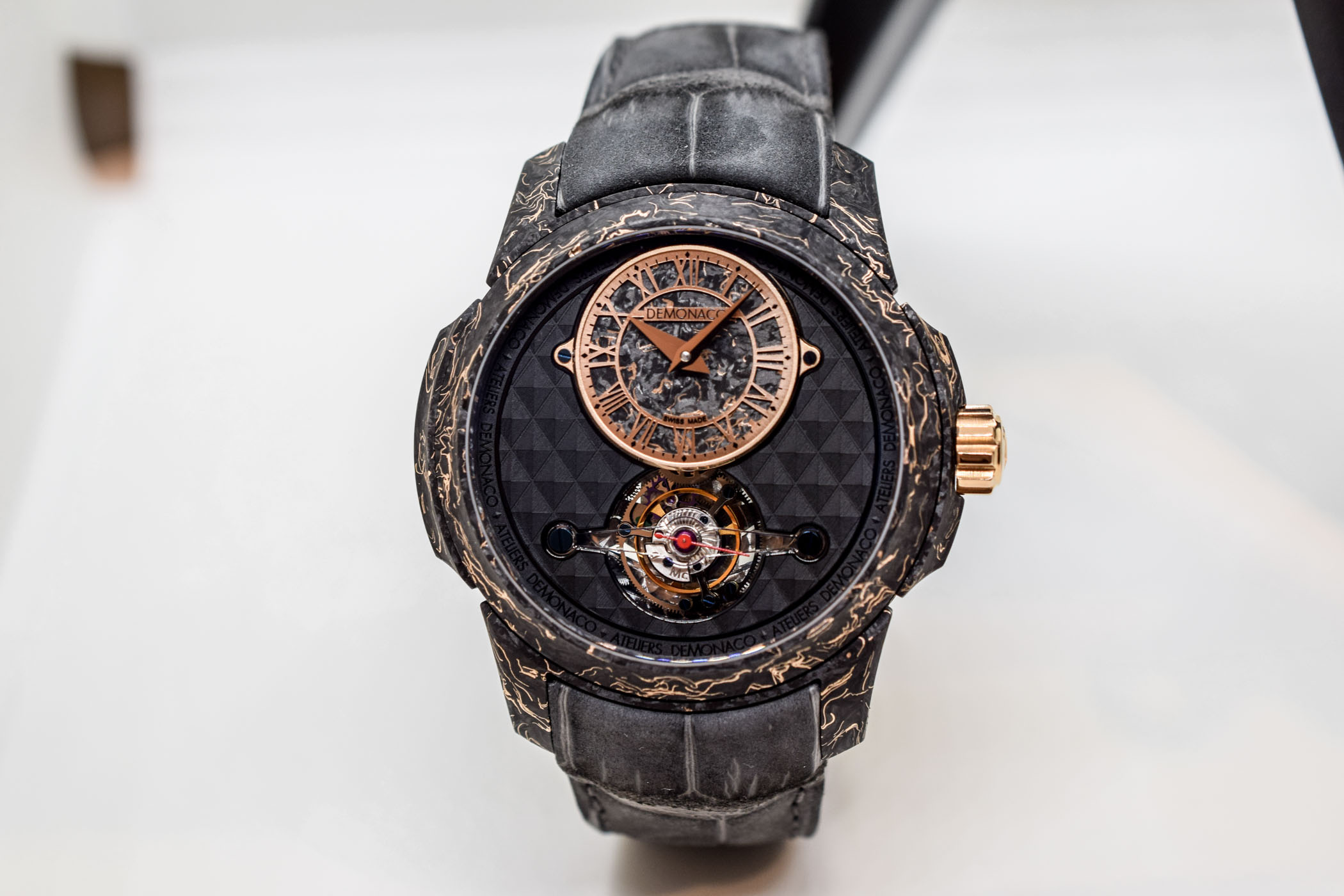
In your bespoke collection, you can go even further…
Yes, almost half of our production is bespoke watches. And in all of them, you can see the care and the craftsmanship put into it. The dial of the bespoke Tourbillon Oculus – Grand Prix de Monaco Mai 1966 is made of four layers of 18K white gold. They have been separately hand-engraved and then put on top of each other. This results in an ultimate depth, although the entire dial is only 1.6 mm thick, isn’t it cool? The same method was used for the Tourbillon with the image of the Wat Arun temple in Thailand, which we made for one of the largest collectors in the world. Since he already had 200 tourbillons (!) he wanted this model without the tourbillon, so we made that for him.
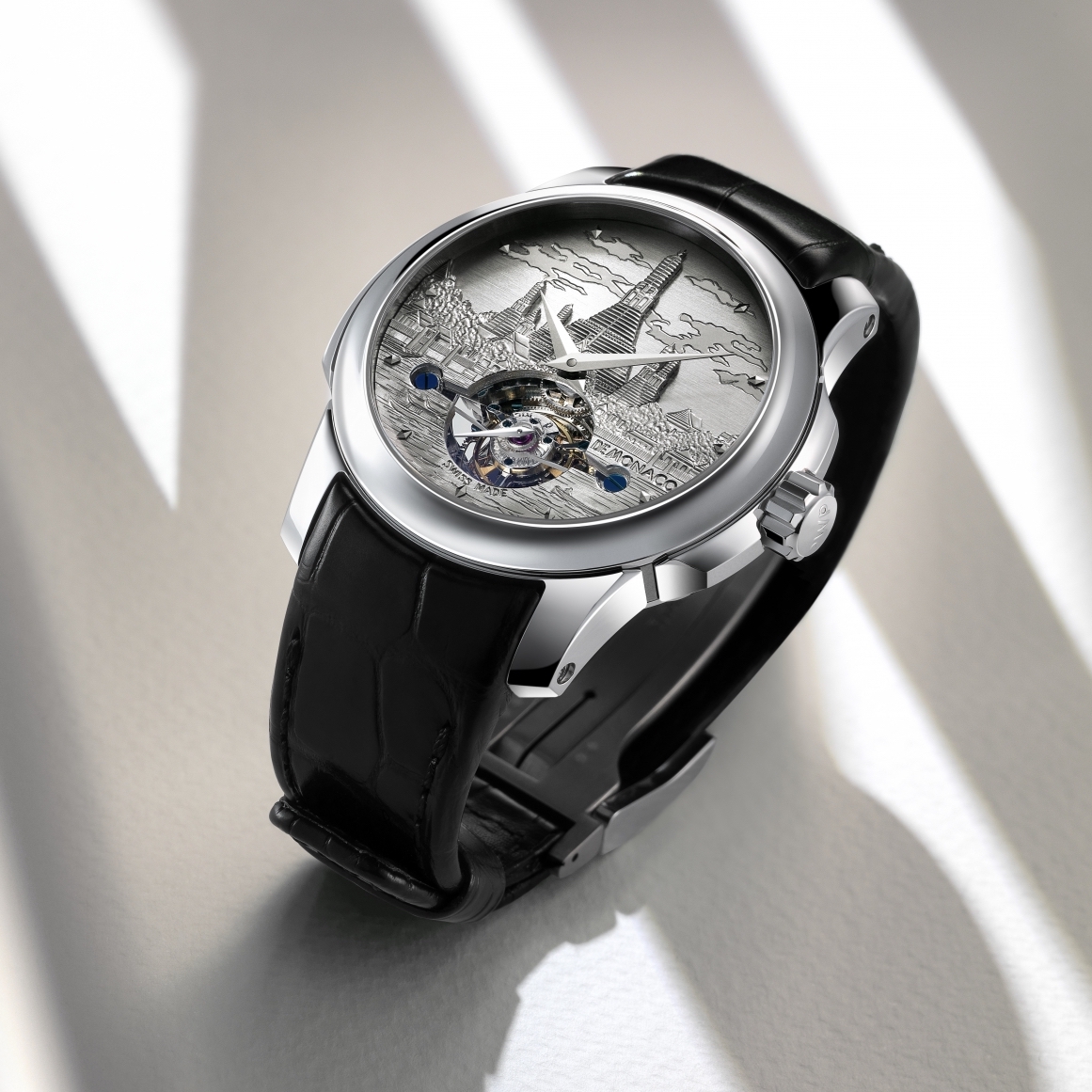
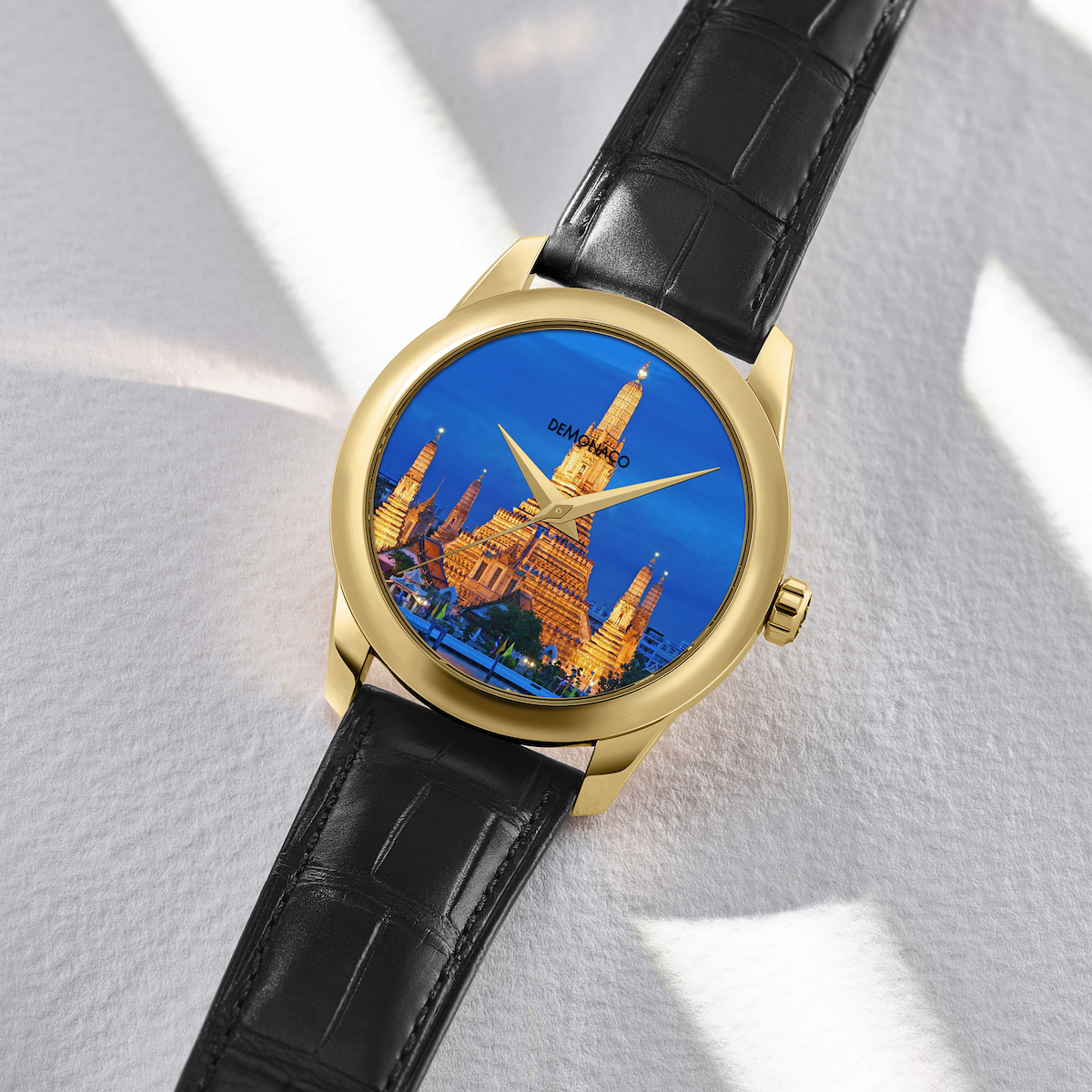
And what about this colourful Wat Arun?
Also a bespoke model, but now the image is made in cloisonné enamel. Very Asian, yet clean. I think it is art, you could hang it on your wall!
Who makes all these watches?
We have about 5 or 6 dedicated watchmakers who work on Ateliers deMonaco watches in our Geneva Manufacture. They are also working on a part of the High Complications watches by Frederique Constant: the Perpetual Calendar and the Tourbillon, and the assembly of the Monolithic. We do not do the enamelling of a watch like the Wat Arun in-house. Fortunately, we have a group of dedicated artisans in Switzerland. It is, however, a time-consuming art, if we were to sell a hundred of those watches tomorrow, we would have to say no.
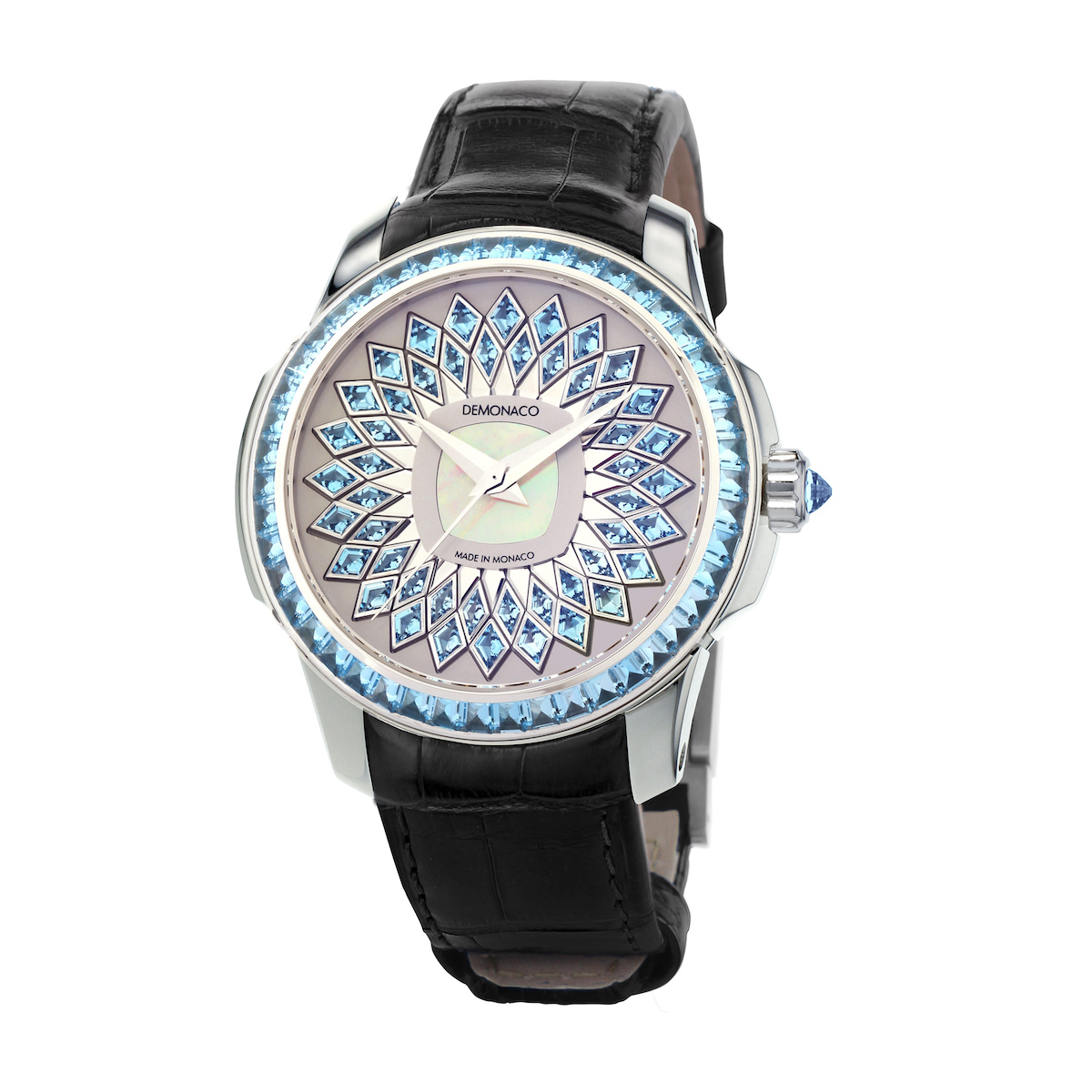
Do you make watches for women too?
Oh yes, we have made a very special Ronde de Monte Carlo La Sirène for Princess Charlène. We have very good relations with the Grimaldi family and are even granted permission to use the coat of arms of the Principauté. And we make other woman’s watches, too. In fact, I really like to match a ladies’ watch design to her other jewellery.
By the way, the collector I was talking about was so charmed by the La Sirène watch I made for Princess Charlène that he asked me to make him a similar watch. He gave me ‘carte blanche’. We chose to use a piece of blue meteorite for the dial, which was found in 1836 and which is 4 billion years old. We placed it in the so-called Oculus, the eye at 12 o’clock, and had a wave of baguette-cut sapphires all of different sizes, explode from the meteorite. When I delivered the watch to him, we sat in his gigantic top-floor office in one of Bangkok’s highest skyscrapers and talked about watches for an hour. That is why I love my job.
You are fond of co-operating, be it with a customer or with other designers, aren’t you?
Yes, we joined forces with the Italian car manufacturer Prato, for example. Our Admiral Chronograph Flyback Prato was inspired by their V8 tuned Indycar based on a Chevrolet with 900 hp and an 8.3-litre motor and a glass hood. Our watch has a forged carbon dial, including gold particles mixed with resin. When you put that under a 2,000 bar pressure and add a lot of heat, the resin melts and the gold starts to find its way through the carbon. This results in intricately patterned dials, each one unique.
But the mechanics of that watch are impressive too.
It contains our patented Flyback system ‘direct return to zero”. The architecture of our movement is totally different from other movements. The start and stop mechanism is totally independent of the zero-setting system. This is why we can make a much simpler and stronger column wheel, which is easier to fine-tune. The zero-setting hammer is directly controlled by the finger, which makes it less sensitive to glitches.
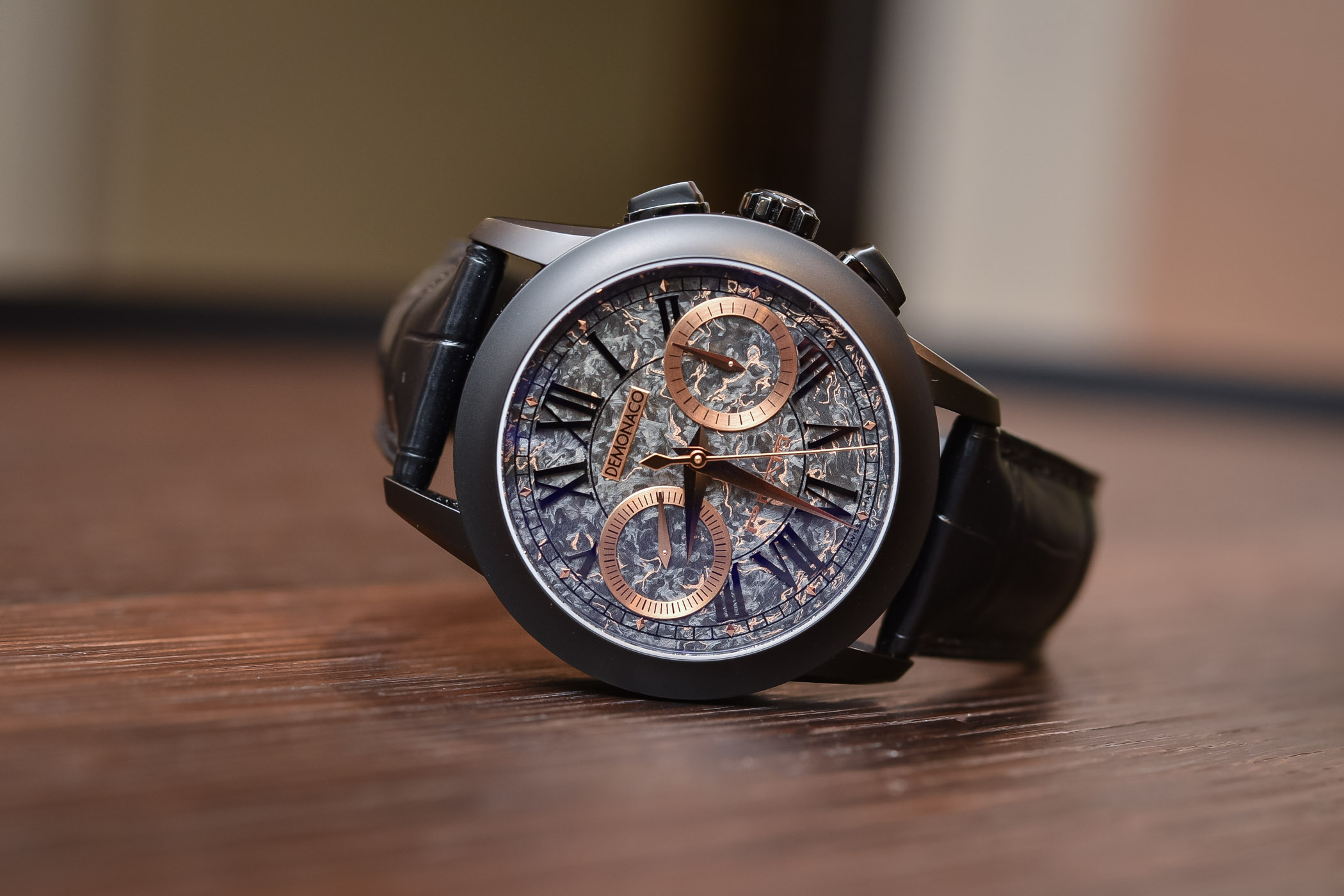
You made a special version of this watch for Luca Stradivari…
This is the limited edition Admiral Chronograph Flyback Stradivari. Luca Stradivari is a descendant of the famous Stradivarius family, who built the most exceptional violins. Stradivari himself is an accomplished interior designer, for instance for Rolls Royce. Furthermore, we made something bespoke for him, too. He had an assignment to redecorate apartments in Monaco. He wanted to give the final owners a special watch, and we designed one with a sapphire dial and applied indexes. We had to drill 52 tiny holes in the dial with a diamond drill to attach the indexes. But the result is stunning.
What is your entry price point?
We start around 10,400 euros for our steel chronograph. The steel, however, is treated with a special Armure technique, unique to our Maison. The case is exposed to a chemical process including carbon diffusion at low temperatures which hardens the steel’s surface from 220 Vickers to 1,200 Vickers, making the metal about five times more scratch-resistant than normal steel.
And how many points of sales are you aiming at worldwide?
We are not looking to have that many points of sales, we want to be highly exclusive. We must be able to meet our perfectionist standards at all times. Our motto is ‘Noblesse oblige’, which translates as ‘Always aim for the highest level’. I like to be in direct contact with my customers, it takes a special jeweller to convey our proposition, not anyone can do that. So we are extremely picky. Fortunately, we have found a very creative jeweller to represent us in Adriaan Reijersen from Reijersen Juweliers in Oudewater.
Today, you are CEO of Ateliers deMonaco and also technical director of Ateliers deMonaco, Frederique Constant and Alpina, do these different positions not conflict?
A lot has changed in the past twenty years. We started out with 10 people and grew to more than 100. Then the Group was sold to Citizen, and we are now part of a company which employs 10,000 people. For me, the combination of creation, finding technical solutions, but also the business side of it all, selling the watch, going to our clients, is perfect. The synergy between the different brands and jobs gives me a lot of joy. Watches are my passion, what more could I possibly want?
For more details, please visit ateliers-demonaco.com.


